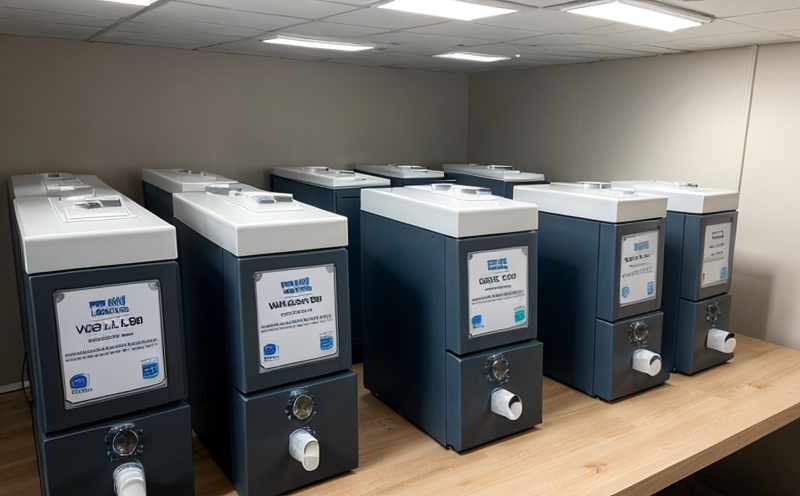DIN EN 717-1 Formaldehyde release testing Chamber method
The DIN EN 717-1 standard is a comprehensive framework designed to ensure that textiles released into the market do not pose health risks due to formaldehyde contamination. This section provides an in-depth look at the DIN EN 717-1 method, which utilizes a chamber-based approach for formaldehyde release testing.
The primary objective of this test is to measure the amount of formaldehyde that can be released from textiles under controlled conditions over time. The test simulates real-world use scenarios where textiles are in contact with skin or exposed to air. This ensures compliance with international regulations and consumer safety standards.
Formaldehyde, a known carcinogen, has been linked to various health issues including respiratory problems and allergic reactions. Therefore, stringent testing methods like DIN EN 717-1 are critical for ensuring that textiles meet strict formaldehyde emission limits set by regulatory bodies.
The test involves placing the textile sample into a sealed chamber where it is exposed to controlled temperature and humidity levels. Formaldehyde present in the fabric is gradually released into the air within the chamber over a specified period, typically 168 hours (7 days). The amount of formaldehyde released is then measured using sensitive analytical instruments.
Specimen preparation for this test requires precise handling and conditioning to ensure accurate results. Samples should be cut to standard dimensions and conditioned under specific temperature and humidity conditions before being placed in the chamber. This ensures that any observed formaldehyde release can be attributed solely to the material itself rather than external factors.
The use of a sealed chamber allows for an accurate measurement of formaldehyde released from textiles during storage, transportation, or use. It provides a realistic simulation of how materials might behave under real-world conditions. This method is particularly useful for evaluating fabrics intended for prolonged contact with human skin such as clothing, bedding, and upholstery.
Accurate reporting of the results obtained through this testing process is essential to ensure compliance with relevant regulations and industry standards. Results are usually expressed in terms of milligrams per kilogram (mg/kg), which represents the mass of formaldehyde released by one kilogram of fabric over a given period.
Applied Standards
| Standard | Description |
|---|---|
| DIN EN 717-1:2019-05 | This European standard specifies the method for determining the formaldehyde release from textiles by means of a chamber test. |
Quality and Reliability Assurance
- Consistent temperature and humidity control during specimen conditioning.
- Precise measurement techniques to ensure accurate detection of formaldehyde levels.
- Regular calibration of all analytical instruments used in the testing process.
- Strict adherence to sample preparation procedures to eliminate external variables.
Use Cases and Application Examples
This DIN EN 717-1 formaldehyde release test is widely used across various industries including fashion, home textiles, automotive interiors, and medical equipment manufacturing. By ensuring compliance with this standard, manufacturers can protect both themselves from potential legal issues and the consumers using their products.
For example, a clothing manufacturer might use this test to ensure that all garments meet the required formaldehyde emission limits before they are put on sale. Similarly, an interior designer could rely on these tests when selecting fabrics for upholstery or curtains knowing full well that they comply with relevant safety standards.
The results of such testing can also be beneficial during product development stages allowing researchers and engineers to identify any potential issues early in the process. This proactive approach helps reduce costs associated with recall campaigns while enhancing overall brand reputation.





